Road Safety: Staying Out of a Truck’s Blind Spots
Introduction
Though many assume truck drivers have a better view of the road because they are higher off the ground and have larger mirrors, trucks actually have bigger blind spots.
Staying in a truck’s blind spot means that the truck driver cannot see you or your car, posing a huge safety risk and potentially leading to a serious accident. Learn where the blind spots are, give trucks plenty of space, and pass promptly to keep you and the drivers around you safe.
Stay Aware
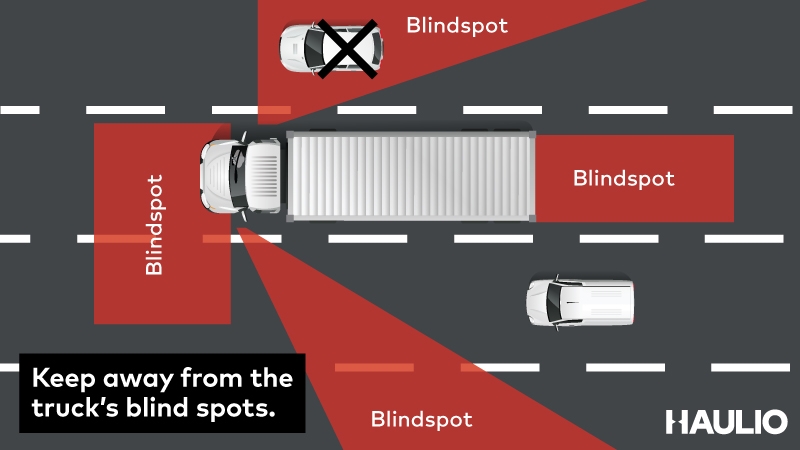
1. Keep away from the sides of the truck.
A truck’s increased size means bigger blind spots, so it is crucial to be aware of where these blind spots are. Sections of the lanes on either side of a truck, particularly on the sides, are not visible to the truck driver and therefore extremely dangerous for other cars to drive through.
- If you must drive through these areas to pass a truck, use caution and pass as quickly as safety allows. Signal early and let the driver see you before you pass.
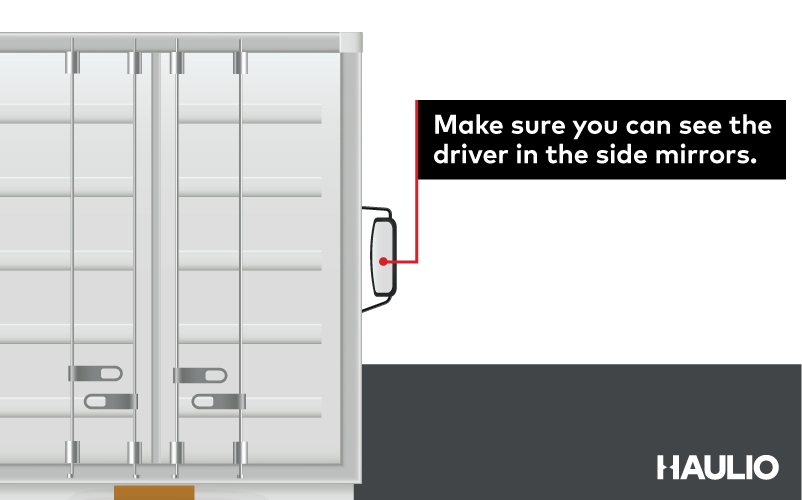
2. Make sure you can see the driver in the truck’s side mirrors.
If you can’t see the driver in their side mirror, it is likely that they can’t see you either. Not being able to see the driver in his side mirrors indicates you are in a blind spot and should move out of that position as soon it is safe to do so.
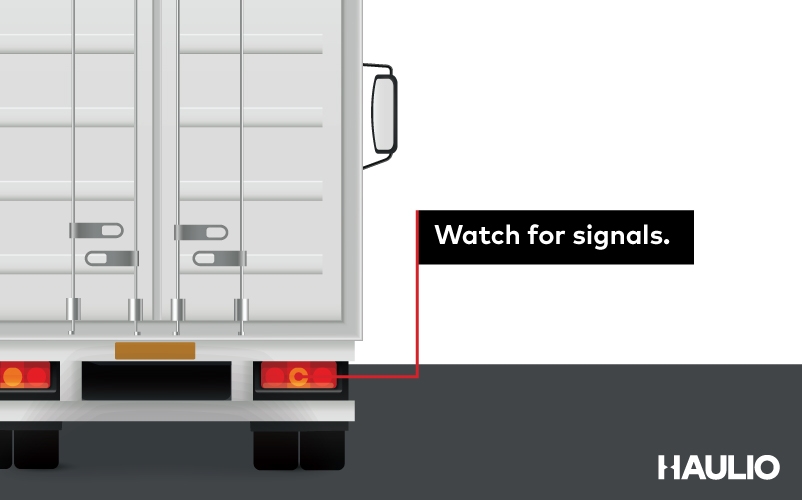
3. Watch for signals.
When driving behind a truck, you can’t see what is happening up ahead and must rely on the signals of the truck driver in front of you. Stay observant and keep a close eye on the truck’s turn signals and brake lights so you can be prepared for them to stop or turn with some advance notice.
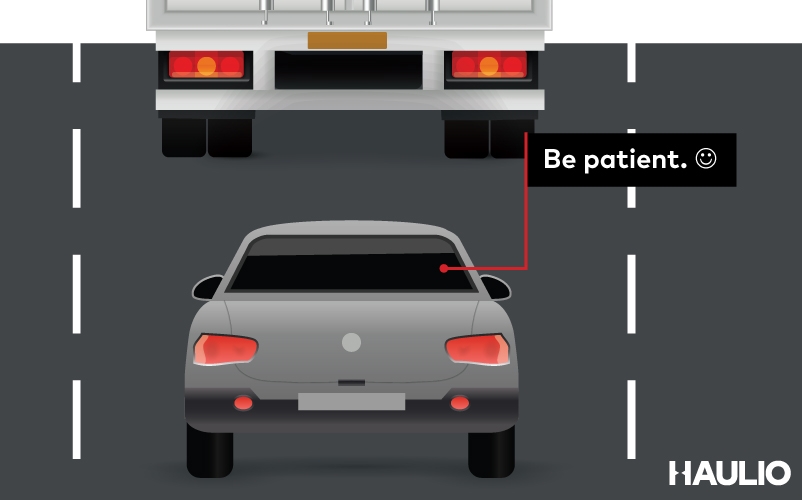
4. Be patient.
Having a patient mindset can be just as crucial as staying aware of blind spots. Remember that trucks cannot maneuver as easily as smaller cars, which is particularly important in emergencies. Be cautious and respectful when driving around a truck to help keep yourself and everyone around you safe.
- Avoid honking (unless in an emergency situation), aggressive driving, and weaving through traffic, as these cause distraction and could ultimately result in a crash.
When Driving in Front of and Behind a Truck
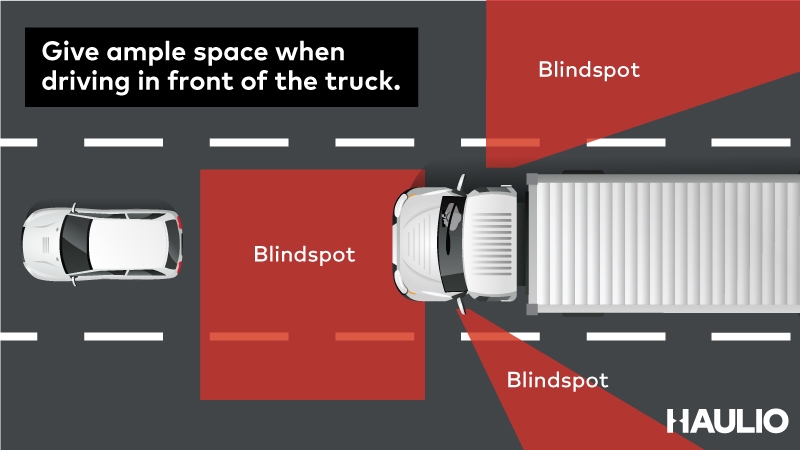
1. Give ample space when in front.
Trucks cannot stop as quickly as a car or motorcycle, so it’s particularly important when driving in front of a truck to to give the truck driver plenty of space in case they do need to stop. If can see the truck’s headlights in your rearview mirror, you are out of the front blind spot and a safe distance in front of the truck.
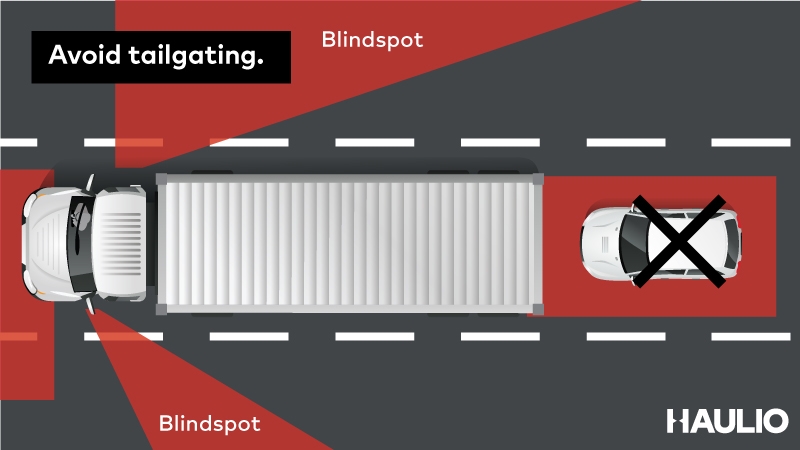
2. Avoid tailgating.
A truck’s large size means that truckers do not have rearview mirrors and must rely on side mirrors to see cars behind them. Driving behind a truck also means you cannot see what’s happening in front of them. Stay out of the no-zone directly behind the truck and give the truck plenty of space to slow down or stop.
- You should leave about 20-25 car lengths, or a four-second distance, between you and the truck in front of you.
- As often as possible, try to keep both of the truck’s side mirrors visible in front of you. This allows the truck driver to see you and be aware of you as well.
- In poor weather conditions, leave even more space between you and the truck.
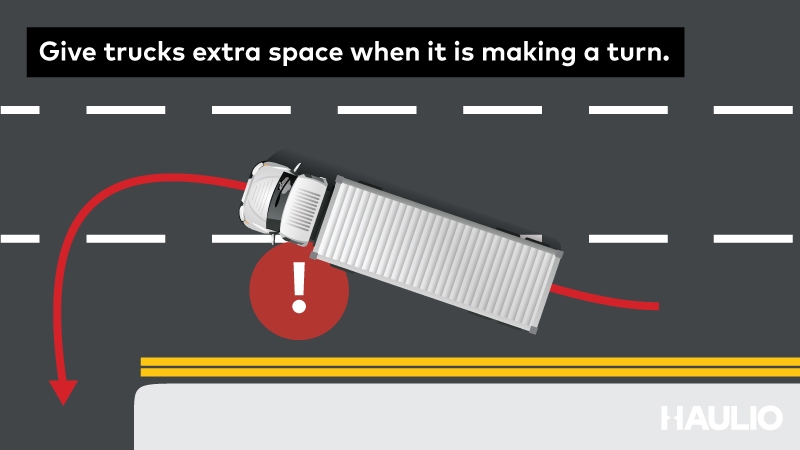
3. Give trucks extra space when it is making a turn.
Trucks will sometimes need to swing wide to make a turn, taking up additional lanes, so be extra aware if you are beside or behind a turning truck.
- Give the truck plenty of space.
- Don’t cut between the truck and the curb, and be aware that trucks cannot slow down as quickly as smaller vehicles.
When Overtaking a Truck
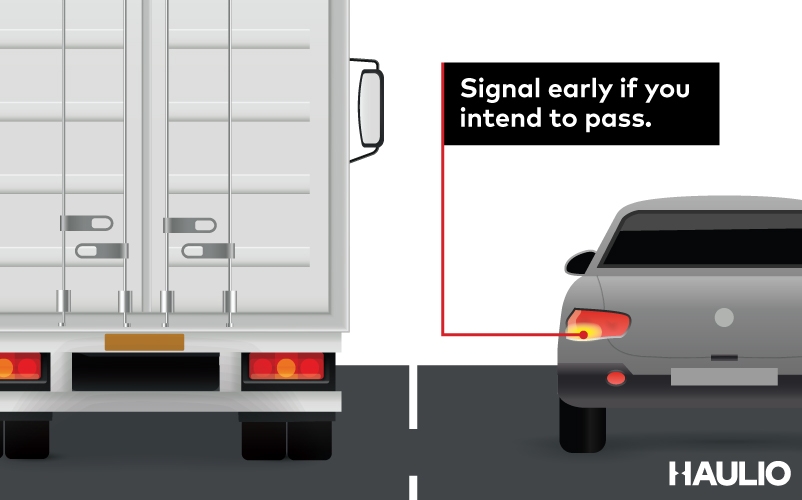
1. Signal early.
Overtaking a truck means you will have to go through a blind spot, however briefly. Show the driver you intend to pass as early as you can so they have enough time to see you and prepare for you to do so.
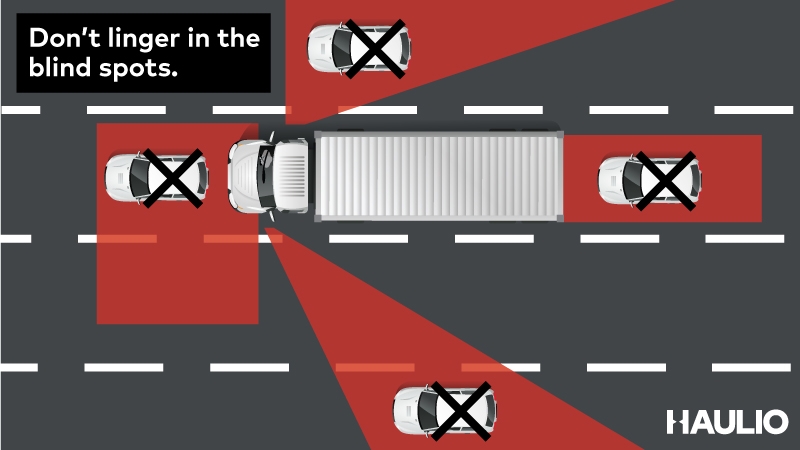
2. Don’t linger in the blind spots.
Overtake as promptly as possible and don’t linger in any of the truck’s blind spots longer than necessary. This area is where you are in the most danger if a truck driver loses control, tries to change lanes, or gets into an accident.
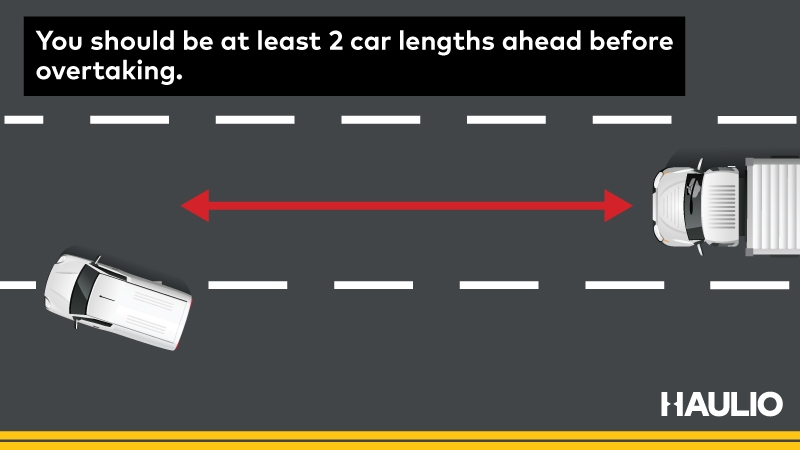
3. Give yourself room to overtake.
You should be at least two car lengths ahead of the truck before merging back into the same lane. This ensures that you stay out of the truck’s front blind spot and helps you avoid cutting the truck off.
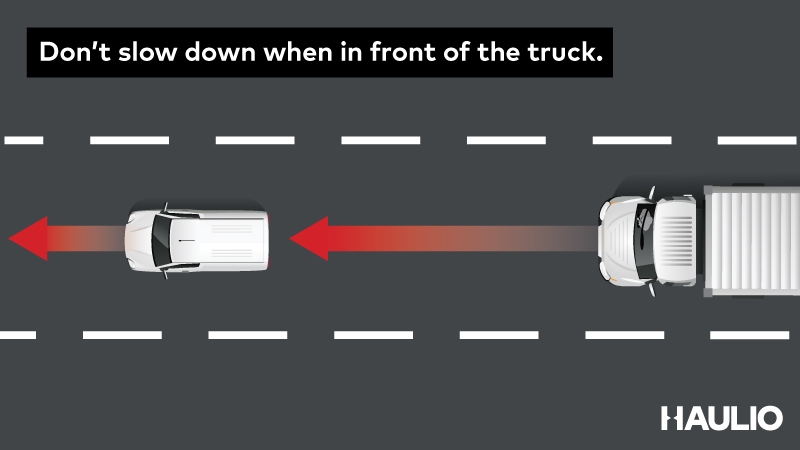
4. Don’t slow down.
After merging back into your lane in front of a truck, maintain passing speed and only slow down when you have a safe distance between you and the truck.
Other Safety Tips
- Never walk behind or drive around a truck that is reversing or preparing to reverse. The driver will not be able to see you, potentially leading to a fatal accident.
- Never cut in front of a truck that is slowing down to stop.
- Never underestimate the size and speed of an approaching truck. A large prime mover often appears to be traveling at a slower speed because of its large size. Many collisions involving a passenger vehicle and a large truck occur at intersections, when the passenger vehicle driver did not realize how close the truck was or how fast it was traveling.
Questions?
We’re happy to help! Fill in the form below and we’ll get back to you shortly.






